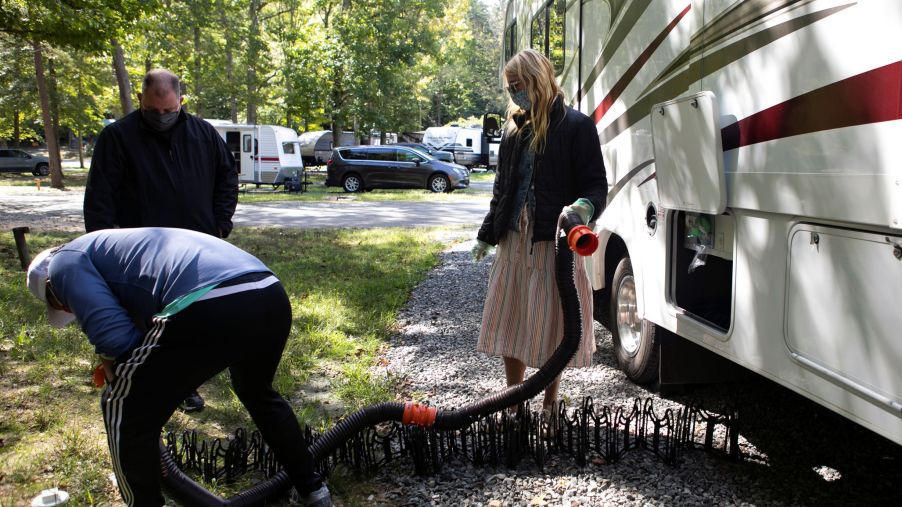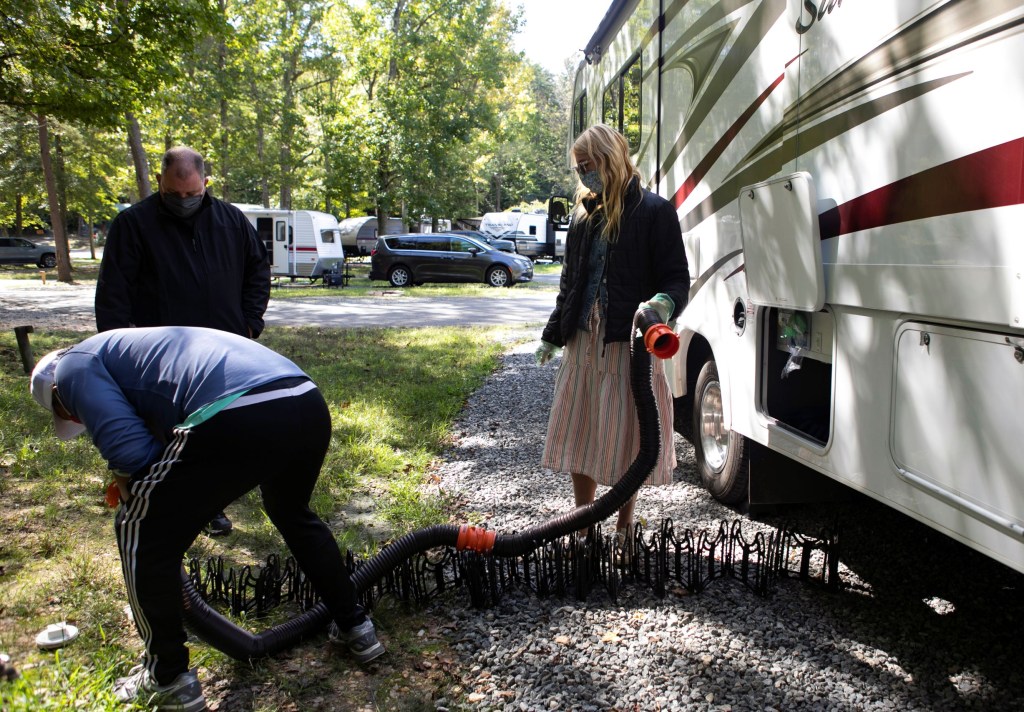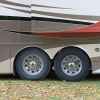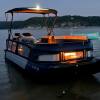
What to Do At Check-In When Traveling With Your RV
Even before the pandemic, camping grew in popularity with more people traveling by camper and RV. In 2016, 40.5 million Americans over the age of six were camping which was a jump of 500,000 campers from 2015. That’s 13.7% of our country’s population. By 2018, 1.4 million households went camping for the first time.
However, setting up an RV has a lot of steps and can be intimidating for those who are new to it. So, what do you need to do at check-in when you reach your campsite with your RV?
Owning an RV doesn’t have to be stressful

When going to the dealership to pick up your new RV, you’ll get a quick walk-through of its features, gadgets, and hookups. There is a substantial chance you won’t retain half of the information thrown at you. The staff at RV dealers tend to rattle everything off with the speed of a seasoned auctioneer.
But don’t panic. According to Glamper Life, you’ll get it once you’ve gone through setup and breakdown a few times. Until then, we have gathered a list of vital things to do along with those to avoid when setting up your camper at a site.
Check-in dos and don’ts
When you check-in at the campsite, your first step is to review the amenities you booked with the staff to ensure it’s what you wanted before you set up. It’s also a great time to ask more general questions about your stay. Like what are the campground rules, campfire policies, dumpster location, and any other questions you may have.
Next, you’ll want to walk the site and check for low tree branches, glass, and any other hazards or problems that could damage your vehicle. Many experienced campers keep an electric blower onboard to clear the site quickly. They can also be used to clean off the slide-outs before you pack up to go home.
Know the hookup locations and where to park the RV to make the connections and check the level. Chock your wheels after parking the RV. Some will tell you to use stabilizing chocks along with standard wheel chocks for better security. If the site is very off-level, you may need to use leveling blocks under the wheels. It’s also essential to remember to put the jacks down.
Once you complete the vital step of leveling your camper, you can start hooking up electricity, sewage, and water. If it’s not level, you’ll have to undo it all and move the RV.
For safety, turn the breaker off if you have access to it before connecting the electricity. Once everything is hooked up correctly, turn the breaker back on. Before hooking up the water, make sure all the spigots inside your RV are off. It’s good to use a water pressure regulator to prevent damage to your vehicle if the water pressure is high.
Glamper Life recommends using downhill hose supports for your sewer connections as a more efficient system. Keep the valves for black, and gray water closed until you’re ready to dump your waste. Then dump your black water before the gray to flush everything out.
Next, you’re ready to pop out your slides and set up the RV. Change the fridge from gas to electric and turn on the ice maker. Get your appliances unpacked and put the awning out. It’s time to enjoy your trip.
The importance of planning your RV trip
One benefit of traveling by RV is traveling more often for less money. With your RV, you have a bedroom, bathroom, and maybe even a small kitchen for preparing meals.
To ensure a smooth trip with few surprises, the crew at Roadtrippers recommends you start by booking your campsites as far in advance as possible. With the popularity of camping these days, it’s the only way to guarantee you’ll have a place to stay. Pay attention to cancelation policies, and make sure you bring those on your trip.
Research your route and look for low clearances and propane restrictions at bridges and tunnels. Do your homework on gas stations to make sure they are camper-friendly. Also, make a note of steep grades and switchbacks because it’s a different experience in an RV.
Parking at various tourist stops is something else you’ll want to consider. Does the stop have RV parking, or will a car be required?
Also, don’t expect to reach a destination in an RV at the same time you would if traveling by car. If you plan to average 50 mph for travel, your estimated arrival time will be far more realistic.


